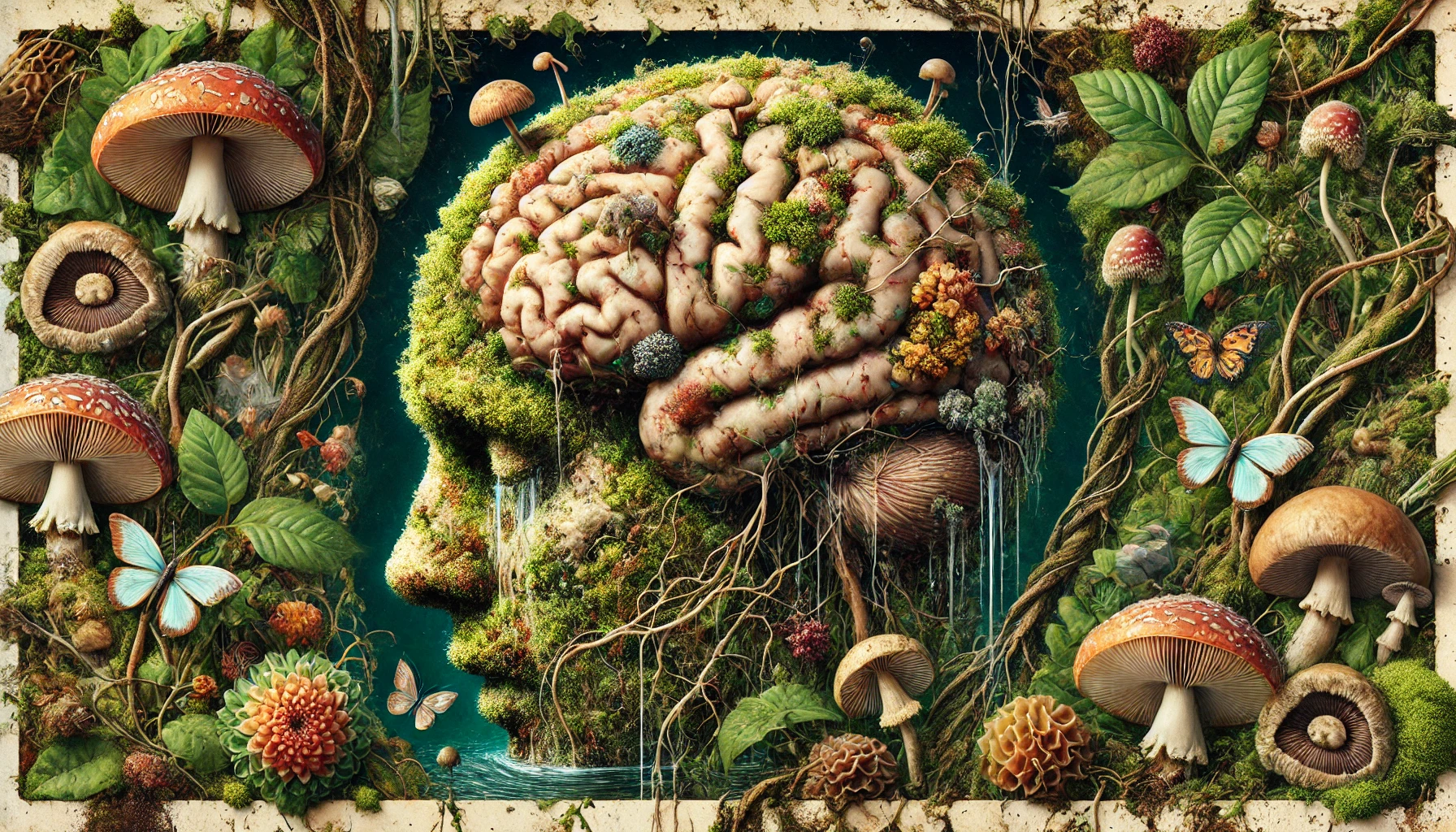Brain rot is the decline in mental faculties from overconsuming trivial online content. This article will explain what brain rot is, its causes, symptoms, and practical ways to prevent it.
Key Takeaways
-
Brain rot is a term describing the decline in mental faculties due to excessive consumption of trivial online content, recognized as the Oxford Word of the Year in 2024.
-
The rising awareness of brain rot signifies growing concerns about the impact of low-quality digital content, particularly among younger generations like Generation Alpha and Gen Z.
-
Preventative strategies such as establishing device-free areas, limiting screen time, and engaging in intellectually stimulating activities are essential to mitigate the effects of brain rot on cognitive health.
Understanding Brain Rot

Brain rot refers to the decline in a person’s mental faculties, primarily attributed to the excessive consumption of trivial online material. The term has become synonymous with the detrimental effects of engaging with low-value content, which can lead to a perceived deterioration of one’s cognitive abilities.
The phrase is often associated with the consumption of trivial or simplistic online content, which can devalue complex ideas and diminish our capacity for critical thinking. This decline is not just a matter of individual concern; it reflects broader societal trends in the digital age. In 2024, brain rot was recognized as the Oxford Word of the Year, highlighting its significance in contemporary discussions about digital content consumption, as noted by Oxford University Press.
Recognizing brain rot helps us understand its impacts and find ways to counteract them. Defining and acknowledging this term allows us to navigate our digital environments more effectively and make informed content choices.
The Rise of “Brain Rot”
The term brain rot has seen a significant uptick in usage, especially on social media platforms, coinciding with growing concerns over its negative implications. From 2023 to 2024, its usage skyrocketed by 230%, reflecting a heightened awareness and concern about the effects of trivial online content. Initially popularized on TikTok, brain rot quickly spread into mainstream media discussions, emphasizing the impact of low-quality digital content on our intellectual state.
As society becomes increasingly formed by digital interactions, the humorous connotation of brain rot in online communities often masks deeper concerns about the general decline in cognitive abilities. The term’s popularity highlights society’s growing preoccupation with the perceived dangers of consuming excessive amounts of low-quality online content. This is particularly evident among Generation Alpha and Gen Z, who are immersed in a digital world from a young age.
The increasing conversation around brain rot reflects broader anxieties about the digital age and its impact on our mental faculties. This term captures the fear of losing our intellectual edge amid constant digital stimulation, whether through brain deterioration or the devaluation of complex ideas.
Symptoms of Brain Rot
Overexposure to low-quality content can cause mental exhaustion and a sense of being overwhelmed. This fatigue often appears as exhaustion even after short periods of mental and intellectual effort, resulting in a noticeable decline in concentration and problem-solving abilities, especially for tasks requiring sustained focus.
Impaired memory is another common symptom of brain rot. People may struggle to recall names, dates, or recent events, affecting both personal and professional relationships. This can lead to misunderstandings and diminished cognitive skills, creating a cycle of frustration and disengagement that exacerbates the supposed deterioration of the problem.
Additionally, the excessive use of social media is linked to a decline in attention spans, particularly among younger people. This makes it increasingly difficult for individuals to focus on tasks for extended periods, contributing to a broader decline in cognitive abilities.
Causes of Brain Rot
Doomscrolling, the continuous consumption of negative news and trivial content, is a primary cause of brain rot. This behavior leads to information overload, contributing to mental fatigue and negative moods, and exacerbating the decline in cognitive abilities.
The rise of brain rot in discourse reflects society’s growing concern over the effects of excessive consumption of trivial content on mental engagement and well-being. Younger generations, particularly Generation Alpha, are especially vulnerable to these effects as they grow up in a digital environment integral to their early development. The constant exposure to low-value content can hinder their intellectual growth and lead to long-term cognitive decline.
Addressing the root causes of brain rot is key to mitigating its impact. Understanding the behaviors and environmental factors that contribute to it allows us to develop strategies to combat its effects and promote healthier digital habits.
Preventing Brain Rot
Preventing brain rot involves proactively managing our digital consumption. Establishing device-free areas at home, like bedrooms or dining spaces, can promote healthier habits and enhance personal relationships by fostering meaningful offline interactions.
Using application timers or digital wellbeing tools to monitor and limit screen time can help manage excessive technology use. Allocating specific times for social media and engaging in offline activities, like hiking or volunteering, can foster mental well-being and reduce digital habits. These activities also offer opportunities for personal growth and fulfillment.
Engaging in intellectually stimulating activities that challenge cognitive abilities is vital to combat brain rot. Learning new skills, solving puzzles, or reading complex material can help maintain brain health and mitigate symptoms. Mental health professionals are increasingly addressing brain rot, offering strategies to identify and mitigate its effects, especially among younger populations.
Incorporating these prevention strategies into daily routines can reduce the risk of brain rot and foster a healthier relationship with digital content.
Impact on Mental Health
Brain rot has sparked a serious dialogue about its potential negative impacts on mental health, particularly among younger audiences. Experts suggest that excessive engagement with low-quality online material is linked to negative mental health outcomes, especially in young people. This decline in cognitive abilities can negatively impact emotional and psychological well-being.
Smartphones and social media contribute to sleep issues, fragmented attention, and increased dopamine-seeking behavior, exacerbating mental health problems. Although longer screen time is correlated with increased anxiety and depression, the causality remains unclear. Nonetheless, the association between digital content consumption and mental health issues is a growing concern.
Professional help can aid in developing healthier technology habits and addressing underlying screen dependency issues. A digital detox, involving breaks from screens, can improve self-awareness and mental clarity. Curating media feeds by unfollowing negative accounts and establishing real-world connections with supportive individuals can also lower stress levels and enhance emotional health.
Cultural Reflections
Concerns about brain rot may stem from historical anxieties about the impact of technological advancements on cognitive abilities. Today’s online content is heavily curated by algorithms, leading to varied information exposure among users and concerns about cognitive decline. Algorithmic curation can create echo chambers, reinforcing low-value content and making it harder to engage with complex ideas.
Generational differences in online behavior show that all age groups, from Boomers to Gen Z, are susceptible to social media distractions and negative impacts. Despite these differences, the overarching concern remains: the potential devaluation of intellectual effort and its impact on our virtual lives, now particularly online content in the online world. This reflects a broader cultural shift where virtual lives often take precedence over real-world interactions.
Interestingly, last year’s word, “rizz,” showcased how internet culture influences language, paralleling the concerns raised by brain rot about virtual life. Both terms highlight how way internet culture shapes our perceptions and behaviors, underscoring the importance of critically engaging with the content we consume. An interesting example of this phenomenon is the way these terms evolve.
NeuroImmerse: Immersive Therapy Experiences to Combat Brain Rot
Brain rot isn’t just a metaphor—it’s a real phenomenon where mental stagnation, emotional avoidance, and cognitive overload dull your neuroplasticity, making you feel stuck, unfocused, and detached from your values. NeuroImmerse is designed to fight back. These 10- to 30-minute immersive neuroplasticity exercises aren’t your typical mindfulness relaxation sessions. This isn’t about feeling good in the moment—it’s about rewiring your brain for long-term resilience, focus, and emotional flexibility.
NeuroImmerse integrates the most effective, science-backed therapies into a cutting-edge, immersive format. Each experience is built on a foundation of:
-
Cognitive Behavioral Therapy (CBT) – Disrupt automatic negative thinking patterns and retrain your cognitive flexibility.
-
Acceptance and Commitment Therapy (ACT) – Strengthen psychological flexibility by engaging in values-driven action, even in the face of discomfort.
-
Mindfulness-Based Therapy – Cultivate present-moment awareness, but not for relaxation—this is about rewiring attention and engagement.
-
EMDR-Inspired Techniques – Incorporate bilateral stimulation through 3D surround sound and binaural beats to enhance memory reconsolidation and emotional processing.
-
Somatic Therapy – Engage your nervous system through body-based interventions that promote neurophysiological change.
-
Prolonged Exposure Therapy – Systematically desensitize yourself to distressing triggers using state-dependent learning, ensuring deep, lasting change.
What makes NeuroImmerse revolutionary is its ability to harness state-dependent learning, making real-time neuroplastic changes while you’re in an activated state. Instead of avoidance or passive relaxation, these exercises rewire your responses to stress and cognitive overload, strengthening your ability to focus, think critically, and take action. This is systematic desensitization in action, designed to increase cognitive resilience while keeping you engaged with what truly matters.
If you’re looking for real, evidence-based mental training that rewires your brain, NeuroImmerse is your answer. This is how you fight brain rot—not with distractions or temporary calm, but with immersive, high-impact neuroplasticity exercises that reprogram your mind for long-term strength and clarity.
Comparison with Other Words of the Year
Brain rot has gained extensive recognition, notably being designated as Oxford University Press’s word of the year. The term encapsulates contemporary concerns about digital overstimulation, similar to other words of the year addressing wellness and mental health issues. This recognition underscores the widespread impact of digital content on cognitive and emotional well-being.
The cultural significance of brain rot highlights societal dependence on digital platforms and their cognitive effects. Comparing brain rot with other words of the year reveals a broader societal trend where words embody pressing contemporary issues. Past words have often reflected growing societal concerns, whether about technology, mental health, or social dynamics.
Ultimately, comparing brain rot with other words of the year reveals how language evolves to capture the zeitgeist. Each year’s winning word, including last year’s winning word, offers a snapshot of prevailing issues and concerns, providing valuable insights into society’s collective psyche.
Summary
In summary, brain rot represents a significant concern in today’s digital age. The decline in mental faculties due to excessive consumption of trivial online content is a pressing issue that affects individuals and society at large. Understanding the symptoms, causes, and preventive measures is crucial for mitigating its impact and promoting healthier digital habits.
As we navigate the complexities of our digital environments, it’s essential to remain vigilant and proactive in managing our content consumption. By fostering a balanced relationship with technology, we can protect our mental health and ensure that our intellectual capabilities remain sharp. Let’s take the initiative to combat brain rot and embrace a more mindful approach to our digital lives.
























































